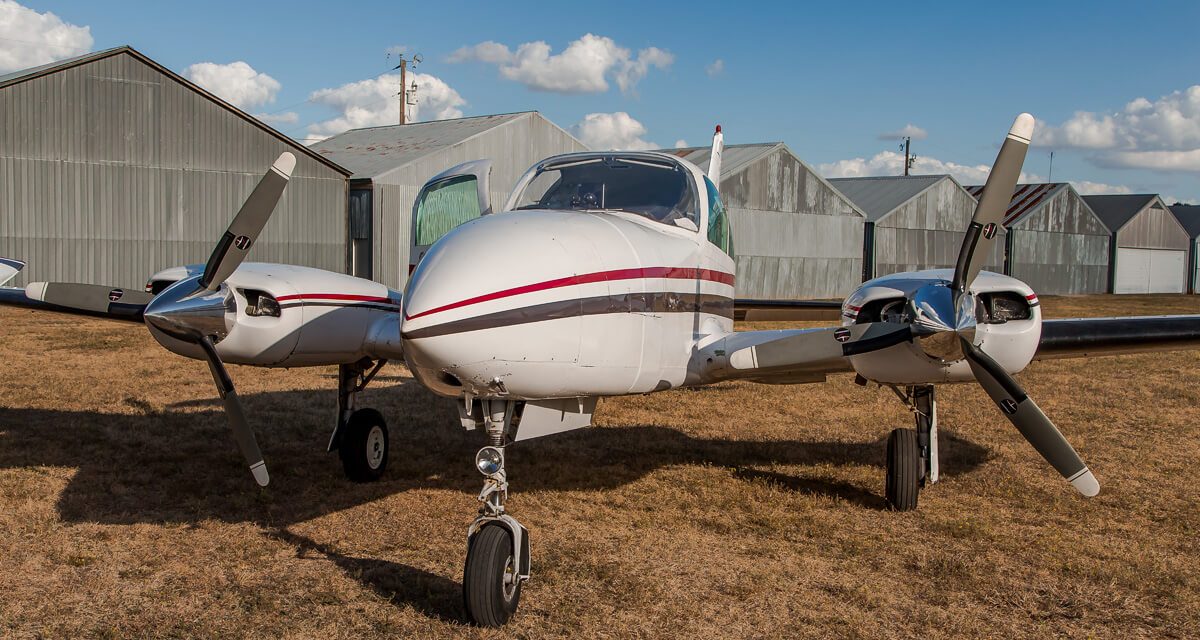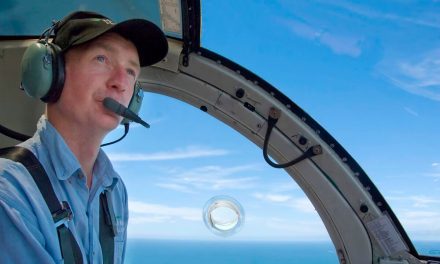The hard reality of twin-engine accidents is that the vast majority are a function of loss of control during single-engine operations. In fact, though it may sound like an oversimplification, response to practically any emergency in a twin is almost identical to the same problem in a single unless the twin has lost power on one engine and is suffering from some aspect of asymmetric thrust.
As every multi-engine pilot knows, Vmc stands for velocity minimum controllable, the slowest speed at which the airplane will accept full power on one side and still remain controllable with the other engine inoperative.
On a Cessna 310R, for example, Vmc is 80 knots and stall speed is 79 knots. If you’ve ever had to demonstrate minimum controlled flight in a 310 with one engine zero-thrusted and the other running at full power, you’ll see this phenomenon at work — and you’ll feel it too.
This article originally appeared in the December 2019 issue of Cessna Owner magazine.
The airplane is obviously angry; control pressures are heavy, performance is barely positive (even if you’re doing everything right), and the pilot will not be having fun. Perhaps worst of all, you’ll be below the Vyse speed of 106 knots by a wide margin, and that’s never a comfortable feeling.
As you slow the airplane, you’ll need progressively more rudder on the power side to hold up the “dead” wing. Eventually, you’ll get to a point where you’re totally out of top (or “power”) rudder and the airplane will want to stall and roll uncontrollably toward the dead engine.
There are only two ways you can recover in a real emergency. One is to reduce power on the good engine. The other is to lower the nose and allow the airplane to accelerate out of the stall and return to controlled flight, obviously sacrificing altitude in the process.
Yes, I appreciate that a Vmc roll is somewhat more complicated than the explanation above but, for purposes of definition, this is a summary of the forces involved.
The most dangerous reaction of pilots in emergency situations is to freeze, sit there unbelievingly, and watch the problem expand and become unmanageable, or to go into panic mode and try to correct the situation by doing the wrong thing. In a twin, pilots may react to a power loss by misidentifying the failing engine and feathering the good one or by trying to solve an engine fire on the left mill by shutting off fuel to the right.
A primary reason pilots lose control in a twin during an emergency is that they’re reluctant to practice handling anything other than normal, balanced, multi-engine flight. The cost may be prohibitive or it may be impractical or impossible to practice emergencies in their own model.
If you fly a 421 on a regular basis, spending an hour or two in a Seminole or Duchess every 6 months may be of limited value because the airplanes are so different in configuration, equipment, control response, and performance.
Losing half your horsepower isn’t the only circumstance in which you could lose control of an airplane. In fact, some single-engine airplanes can become uncontrollable because they have too much power.
Several World War II fighters had so much horsepower that pilots needed to avoid adding too much throttle during any maneuvers at low airspeed, especially a go-around near the ground. The Grumman F6F Hellcat and F8F Bearcat, the North American P-51 Mustang, and the Republic P-47 Thunderbolt were so overpowered that they tended to dominate German and Japanese fighters simply because of their superior horsepower. Unfortunately, power also had a dark side.
Back in the ’70s, former naval aviator and later TWA Capt. Lyle Shelton purchased what was left of a war-surplus Grumman F8F Bearcat following an accident during an air show in Valparaiso, Indiana. The Bearcat’s former owner had been on short final when a horse ran across the runway threshold directly in front of him. He slammed the throttle full forward to go around, and the Bearcat’s huge, 18-cylinder R-2800 Pratt & Whitney radial responded obediently with all 2,100 hp, generating enough torque to countermand the pilot’s controls and roll the airplane hard to the left onto its back.
The F8F crashed inverted on the runway but there was no fire. The Grumman was built so tough, however, that it came to rest on its vertical stabilizer and top cowling, leaving the cockpit slightly off the ground. By some miracle, the pilot walked away, though the airplane was basically totaled.
Shelton bought the wreck, trucked it home to California, rebuilt the airplane into the Unlimited air racer Rare Bear, fitted it with a Wright R-3350 engine, and went on to win more than two dozen air races, some at speeds approaching 500 mph.
Twins manifest the same torque problem when one engine fails. While it’s true there are several upscale training schools that offer simulators in practically any multi-engine model you can name, the sensations involved and the aircraft reaction, especially in non-motion-based sims, may still be so dissimilar to the real world that simulators can only take you so far.
In the airlines, simulators can reproduce practically any flight condition or malfunction. Boeing or Airbus flight simulators are extremely sophisticated and typically cost several million dollars. They can be so realistic that you may be surprised to look behind you and see a classroom with several students and instructors looking on.
Once in the Learjet plant at Wichita, Kansas, I was allowed a few hours in a Lear 35 simulator, and during the simulated taxi out for takeoff, I noticed the motion-based sim was bouncing slightly every few seconds. The instructor advised that was the sim attempting to recreate the seams in the concrete of the taxiway.
Operating costs of modern airliners make it unrealistic to even consider training in the real thing, so pilots very often are awarded their type rating in a simulator. Then they step directly from the “box” into the right seat of a passenger flight with zero hours in a real 737, 757/767, A320, or other 200-passenger twin jet.
Airliners fly with at least a two-pilot crew up front and treat all emergencies with one pilot flying the airplane and the other pilot reading emergency checklists and attempting to troubleshoot the problem.
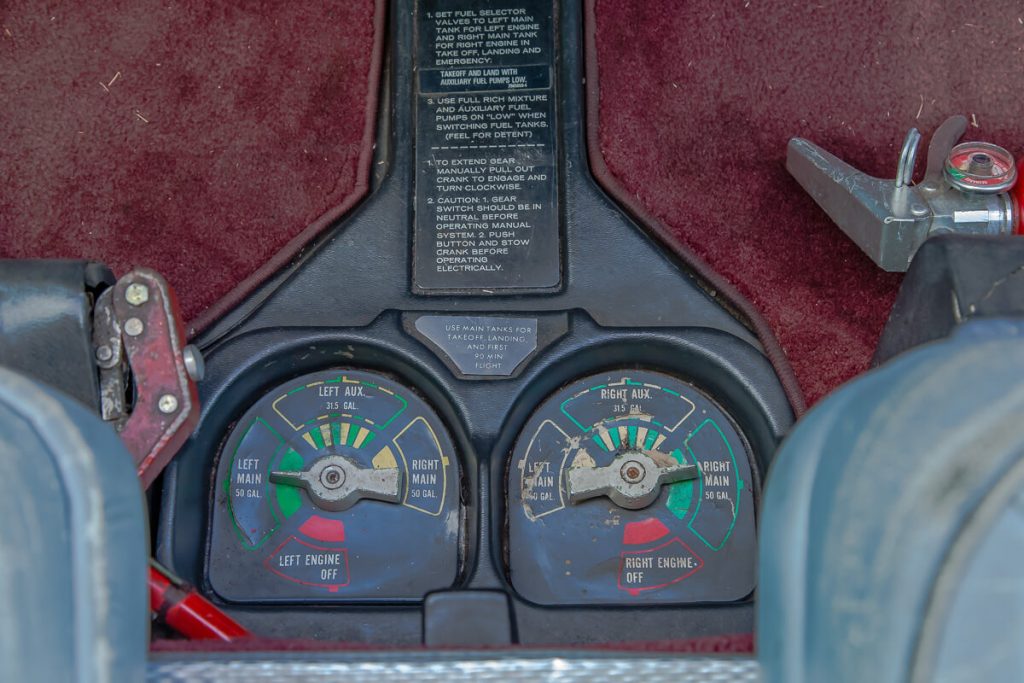
Operators of piston twins usually don’t have such a luxury and must handle every aspect of a problem themselves. Wouldn’t it be great if there was a single, all purpose procedure for solving those vexing multi-engine control problems after a failure?
As it turns out, there is — sort of. It will work on virtually any multi-engine airplane, isn’t that tough to learn, and it’s simple enough that you should be able to use it even when the sky is falling and you don’t want to.
There are six steps, and they are, in sequence: power, flaps, climb, gear, identify, and feather. Here’s the sequence as it was taught to me by the chief pilot of United Airlines 40-something years ago. Gary is long since retired and moved away, but I’ve always remembered his simple advice.
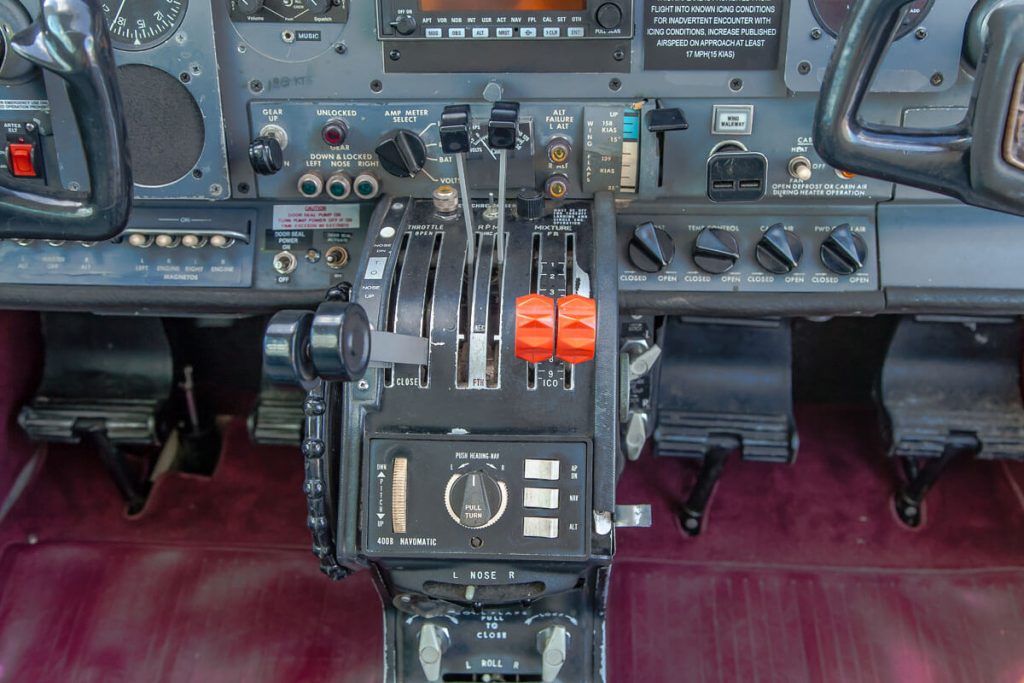
1. Power: All six levers go full forward immediately. Well, maybe not. Presumably, if you’re not flying into a high-altitude airport where you might prefer to have a pair of normally aspirated mixtures set for best power up high, the right four levers need not be touched, as they’ll already be against the panel. (OK, I know there will be some Beech purists out there who’ll insist that older 55-58 Baron throttles in the middle will require special attention, but most general aviation twins mount the throttles on the far left.)
2. Flaps: These should be retracted or set to the normal takeoff position. Most of the time, they’ll be full down, for landing, so you’ll need to reset them to half or full up, whichever applies to your airplane.
3. Climb: You’ll want to aggressively pitch the airplane to the normal Vyse climb attitude. There will be exceptions where you may need to bring the nose up to Vxse. You’d better hope you don’t because Vyse will generate the most climb per unit of time and that’s usually the most important parameter in a single-engine emergency.
4. Gear: This is the simplest item on the checklist. Retract the wheels and hope the gear pump isn’t on the inoperative engine. If it is, you may have other problems.
5. Identify: Ascertain which engine is failing by the most graphic of indicators: “dead foot, dead engine.” If the left foot becomes soft or goes to the floor, that’s an obvious clue that the left engine is failing or has completely given up.
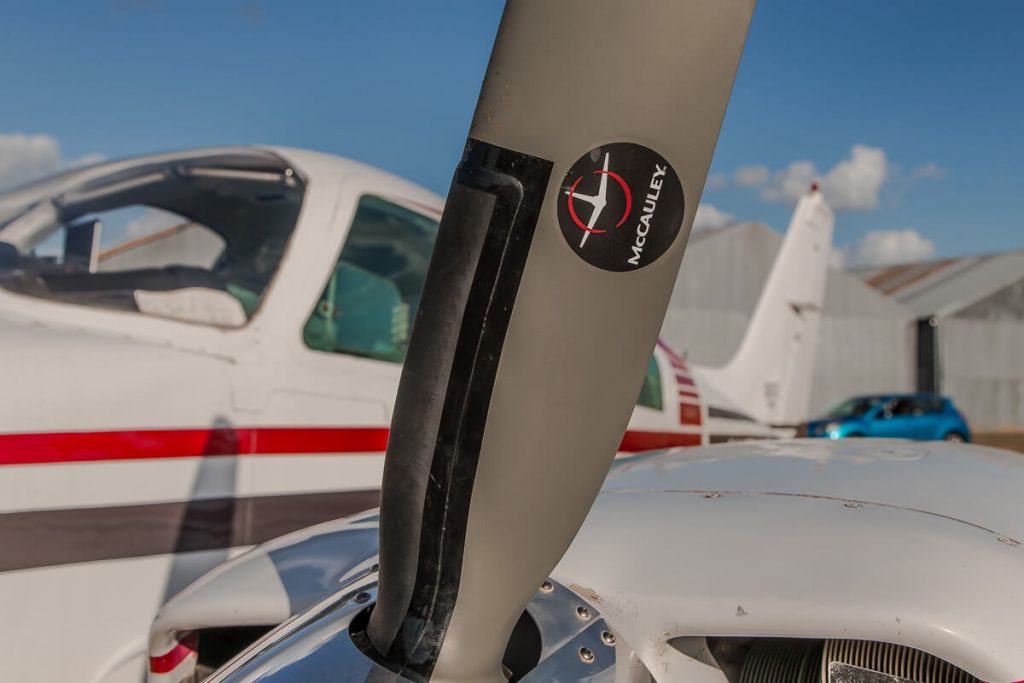
6. Feather: Carefully bring back the offending prop control. Don’t be in a John Wayne hurry here. If for some reason you grabbed the wrong prop control, you don’t want to be slamming anything to the back stop expecting to solve the problem instantly. Retard the prop toward feather expeditiously, but not in a super hurry so you can push it back up if the good engine begins to go offline.
This article originally appeared in the December 2019 issue of Cessna Owner magazine.
You’ll notice that “gear” is far from the first item on the list. That’s because retracting the wheels may actually decrease climb performance on some airplanes as gear doors open and what used to be a smooth bottom wing or fuselage surface becomes an air damp. On the Cessna Skymaster that retracts the main gear into the bottom fuselage, for example, the manufacturer suggests leaving the wheels down until you’ve reached a few hundred feet, because the act of opening all those doors under the belly causes a temporary 100 fpm loss in climb rate.
Once things have calmed down slightly, retract the flaps, concentrate on flying the airplane with ball half out of the cage, consider closing the cowl flaps on the inoperative engine and cross-feeding fuel from the dead wing.
There are several ways to remember the procedure. Some pilots like to store the abbreviation in their heads: PFCGIF (no, it’s not an acronym). Some try to remember by using single words. PFCGIF might lend itself to Private First Class George Idiot Fleeble or whatever else you’d like to use; just remember what the letters stand for. Other pilots like to consider the more logical, short phrase version; full power, takeoff flaps, climb at Vyse, gear up, identify the engine, and feather that prop.
This fairly simple checklist can serve you in all kinds of emergency or normal operations. If the engines are working perfectly and you’ve accidentally ducked under a minimum, you can use it to establish your climb to perform the miss.
If you’re one of those aviators who likes to mentally prepare for an engine failure on every takeoff (as we all should be), the six-item checklist above can come in especially handy for that amazing instant when you really do lose one mill right after rotation.
Simulating an engine problem with zero thrust is always better than actually feathering an engine if you’re only faking it. I once had a check pilot on a Cessna Chancellor I was picking up at the factory for a 7-day press evaluation flight sneak his left arm down between the front seats and shut off the fuel to the right engine immediately after takeoff. Things got very busy very fast, and I did manage to recover and fly away, but I’ll never understand why he didn’t use the safer, zero thrust method.
The beauty of the six-step procedure above is that it’ll work on practically any twin under (nearly) any circumstance, regardless of the phase of flight. If you’re departing Leadville, Colorado, in summer, approaching Milwaukee in a snowstorm or cruising halfway through a four-hour flight with your chin sinking slowly into your chest, PFCGIF will give you the best chance to survive, regardless of whether you know exactly what just happened to your airplane or there was a loud, unexpected noise and you have not the foggiest notion what to do about it.

